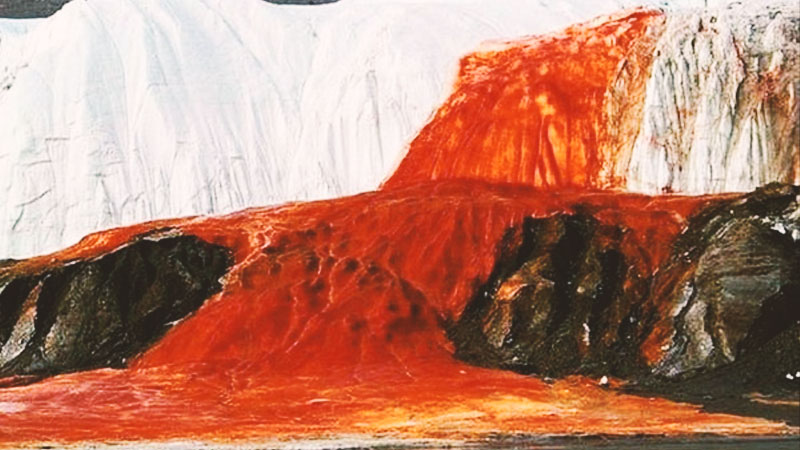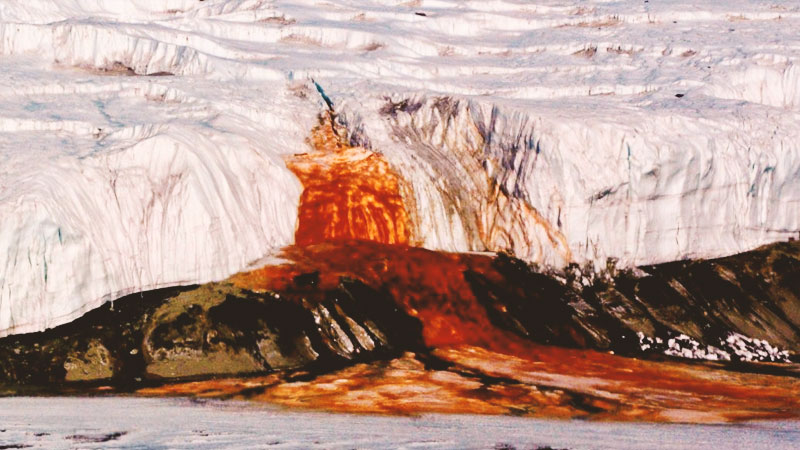
The curious phenomenon occurs in Antarctica, in the dry valleys of McMurdo, near the Taylor Glacier, flowing into Lake Bonney.
In addition to the fascinating visual spectacle, the waterfall also has another intriguing feature: it never freezes, even when temperatures reach -60°C (-76°F).
Only in 2017, after several hypotheses had been ruled out, a team of researchers unraveled the mystery of the “Blood Falls”.
Using radar, experts were able to determine that a sea level rise that took place 5 million years ago flooded the Antarctic continent and generated an underground saltwater lake.
Over time, glaciers formed on the lake’s mirror, which was then separated from the rest of Antarctica, and remained intact for millions of years under more than 400 meters (1300 ft.) of ice.

As the mass of ice grew on the surface, the salt lake became increasingly salty, to the point that today it has three times as much salt as seawater, a key factor in keeping it in a liquid state, since its temperature remains unchanged.
In addition, as it does not come into contact with the atmosphere or sunlight, these waters do not contain oxygen.
Finally, the researchers discovered that the secret of the intense red of the waters lies in the very high content of iron, which, upon rising to the surface, comes into contact with the air and then oxidizes.
The spectacle of the Antarctic Blood Falls is reserved for a few privileged, as the site is only accessible by helicopter or some cruise ships that sail the Ross Sea.


















